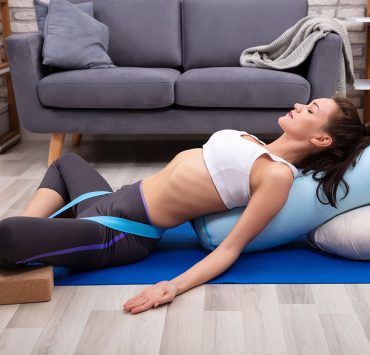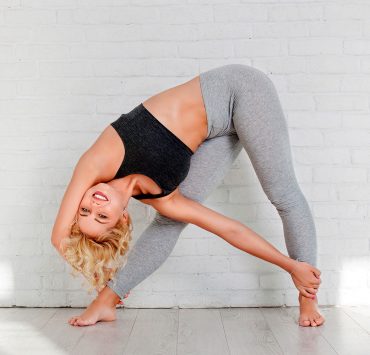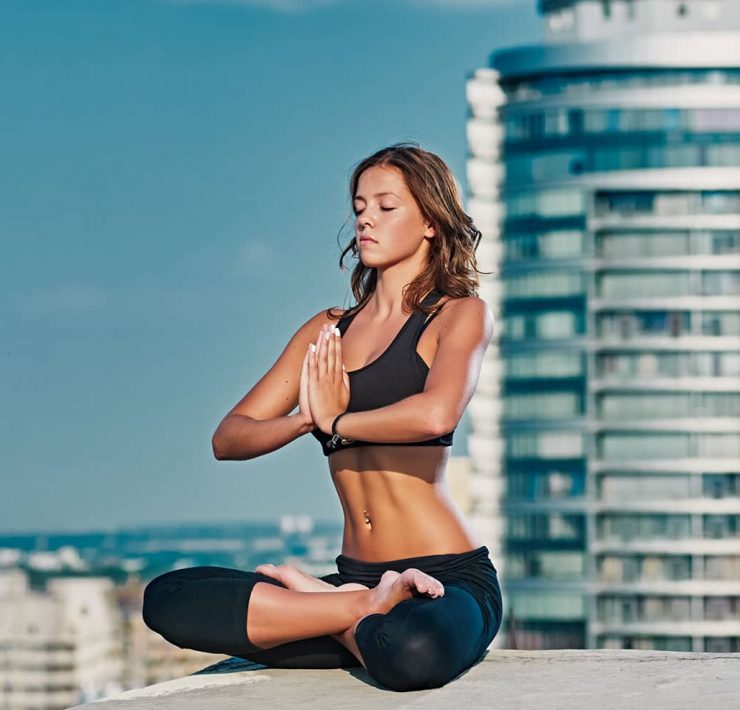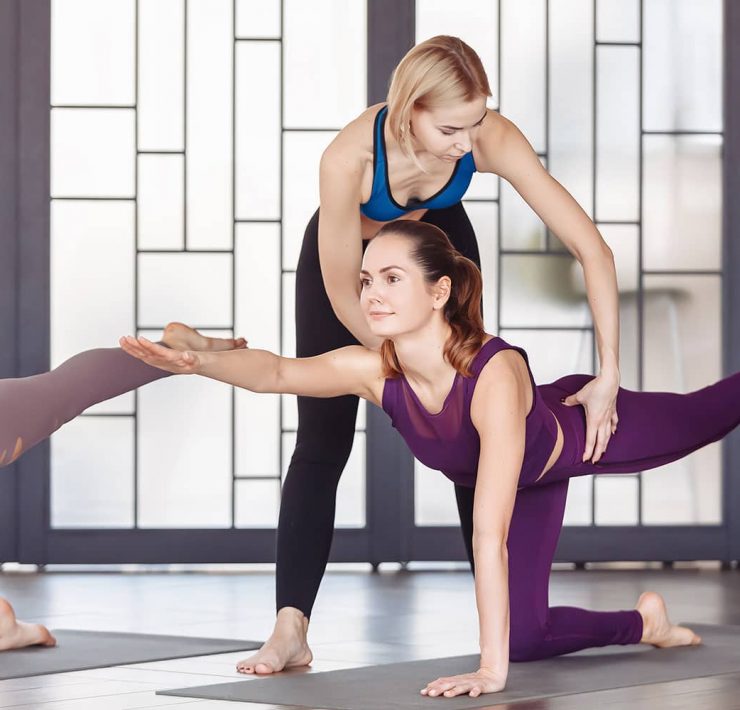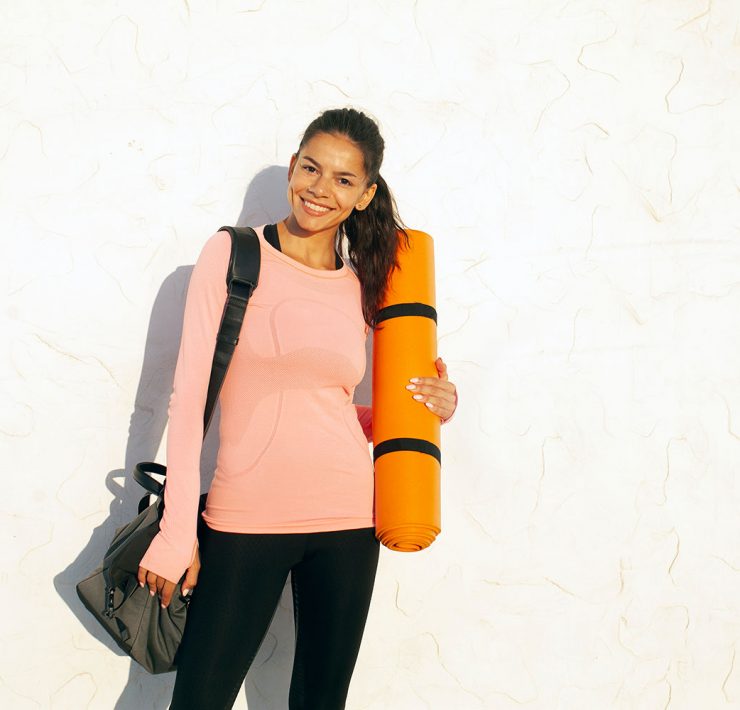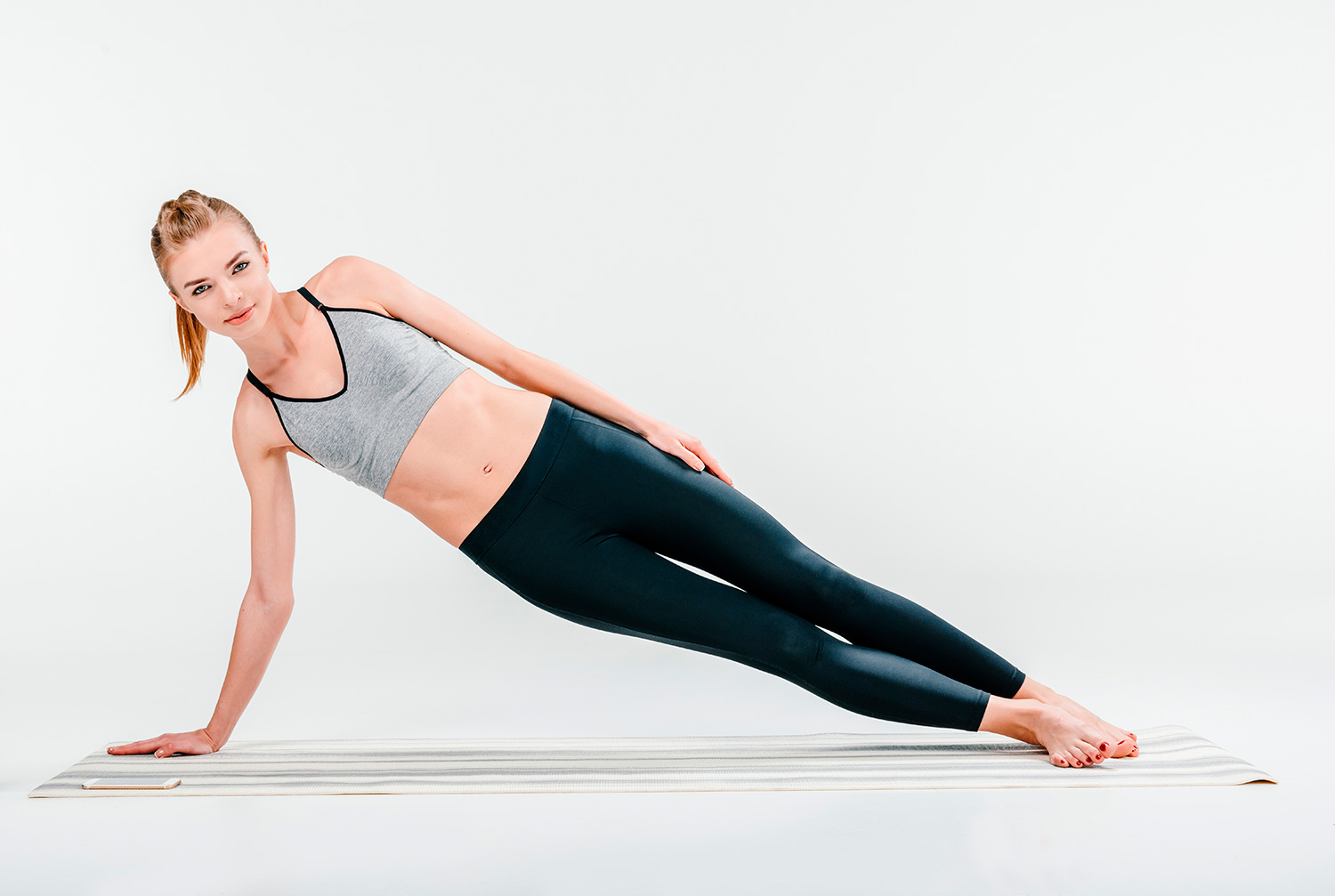
Andrea has been hosting yoga retreats in various locations worldwide…
All advanced yoga practitioners begin somewhere, and most likely, the journey starts out with routine practice of some of the more basic yoga poses. Since yoga is about focus, concentration, and awareness just as much as it’s about physical alignment and energy flow through the body, your personal flexibility and ability to contort into Scorpion pose are less important. No matter what shape or form your body is in, there are a number of yoga poses that can help you to set the stage for a budding practice. Your strength and flexibility will improve as you go, but there is no need to push it; focusing on proper alignment and concentration in these more basic poses will go a long way in the end.
Easy Yoga Poses for Beginners
When practicing yoga, do your best to move alongside your breath. The breath is an anchor that helps to root us in the present moment so it can be a very useful tool for harnessing our concentration and present-moment awareness. Focus on alignment rather than how far you can bend; flexibility will improve effortlessly and naturally with continual practice. It is important that we allow ourselves to be exactly where we are as a way of practicing loving-kindness towards ourselves and also as a way to avoid injury. Contraindications for various poses do exist, so it is important to consult with a healthcare practitioner before starting any new exercise routine.
Tadasana — Mountain Pose

Come to a standing position, bringing your feet together or up to hip-distance apart. Feet should be parallel with weight evenly dispersed throughout.
Tuck the tailbone slightly so that your backside is not pushing out. The hips should sit directly above the ankles. Straighten your legs but keep the knees unlocked.
Press the crown of you head towards the sky, extending the spine while keeping it straight. Allow the shoulders to fall gently, pulling them back just slightly to open the chest.
Allow your arms to fall to your sides. Rotate your arms slightly so that palms face forward.
Hold for 5 to 10 complete breaths.
Salamba Balanasana — Child’s Pose

Begin on your hands and knees, knees beneath the hips and hands beneath your shoulders.
Sit back on your heels as you bring your knees about hip-distance apart. Allow your upper body to fall forward so that your torso comes between your thighs and your forearms stretch forward, resting on the mat. Rest your palms on the ground.
Bring your forehead to the mat and rest the tops of your feet on the floor as well. Open your upper back as you sink further into this pose.
For an alternative Child’s Pose, bring your arms backwards, fingers pointing behind you and arms resting at your sides. Tops of the hands rest on the mat.
Hold for 60 seconds or longer.
Adho Mukha Svanasana — Downward Facing Dog Pose

Begin on your hands and knees, knees beneath the hips and hands beneath your shoulders. Outstretch your palms to root firmly into the mat.
Curl your toes and on an exhalation, lift your knees off the mat pushing into your legs and arms. Lengthen your tailbone towards the ceiling.
Keep your neck in line with the spine so the head stays done. Draw your shoulder blades down your back.
Press your heels towards the floor as is comfortable.
Hold for 30 to 60 seconds.
Vrksasana — Tree Pose

From standing, shift all your weight in the left leg as you bend the right knee slightly. Turn your right knee outwards, resting your right heel against the left leg.
Maintain focus on one point on the floor as you slowly slide your right foot up the left leg while maintaining balance. Allow the bottom of your right foot to rest on the leg either above or below the knee.
Bring your palms together in prayer position at the heart.
Keep your left leg engaged to support your body. Your right knee is turned out to point to the side of the room. Shoulders fall back gently as you open your chest.
Hold for 30 seconds before releasing. Repeat on the opposite side.
Virabhadrasana I — Warrior I Pose

Begin in a neutral standing position with arms at your sides facing the long edge of your mat. Step your feet apart, keeping about 4 feet of space between. Turn your right toes outwards so they point towards the top of the mat. Your left foot can turn in wards slightly. Align your right heel with the arch of your left foot.
The pelvis stays turned towards the front of your mat as you press into your left heel. Bend your right knee so that it sits overtop of your ankle.
Reach up through the arms, opening the chest and extending the torso. Palms can touch one another or face one another with arms parallel.
If accessible, raise your gaze so you are looking up at your thumbs. Shoulders fall away from the ears.
Keep your back leg straight and hold here for 60 seconds. Gently come out of the pose and repeat on the opposite side.
Virabhadrasana II — Warrior II Pose

Begin in a standing position facing lengthwise on your mat. Step your feet out about 4 feet apart and rotate your right foot so it points towards the top of your mat. Your left foot turns inwards slightly. Align your right heel and left arch.
Keep your pelvis turned towards your right foot as you bend your right knee so that it sits over top of your ankle. Press into the left heel to engage the left leg, keeping it straight.
Extend your right arm overtop of your right leg as the left arm extends behind you. Palms face the floor. Arms should form one straight line and be parallel to the ground.
Gaze at your right fingertips. Engage the arms and legs.
Hold for 60 seconds before slowly coming out of the pose. Repeat on the opposite side.
Setu Bandha Sarvangasana — Bridge Pose

Begin resting on your mat on your back. Bend the knees and plant the feet hip-distance apart. Arms rest by your sides with palms facing down. Fingers should just barely touch your heels.
Inhale as you gently roll the spine off the mat, raising the hips. Engage your arms, pressing into them, and open the chest. Extend the chest slightly upwards.
Engage your thighs and buttocks to support your body. Interlace your fingers for support.
Hold for 30 seconds before gently rolling back down to the mat. Repeat once more.
Supta Eka Pada Utkatasana — Reclined Figure Four Pose

Begin on your back with knees bent and feet resting on the floor hip-distance apart. Arms rest for now at your sides.
Keep your left foot planted as you raise your right foot. Place the outside of your right ankle on your left thigh, just above the knee.
Raise your arms and wrap your hands around your left thigh. Pull it softly towards you. Your left foot comes up off the mat. Breathe into the stretch here.
Hold for 30 to 60 seconds before gently releasing your left foot back down. Repeat on the opposite side.
Utkata Konasana — Goddess Pose

Begin in a neutral standing positing facing lengthwise on your mat. Step both feet out so that there is three to four feet of distance between them. Toes turn outwards slightly.
Bend your knees and lower your pelvis. You might bring your pelvis to the height of your knees but this is not necessary; come to a point that is accessible to you. Adjust your feet spacing to ensure your knees to not extend past your ankles.
Extend both arms to either side, parallel to the ground. Bend your elbows and rotate your arms so that palms face towards one another. Tuck the tailbone in slightly and engage your core.
Hold for 60 seconds before gently releasing the pose.
Viparita Karani — Legs Up The Wall Pose

Find an open wall and come to a seated position beside it with feet on the floor in front of you and the left side of your body against the wall. Gently bring your back and head down to the floor and raise your feet. Pivot your body so that the backs of your legs, now outstretched, rest against the wall. The soles of your feet face the ceiling.
Your sit bones should be against the wall if possible but a slight distance away is okay. Maneuver in anyway to make yourself comfortable or use a folded blanket beneath your buttocks or hips for added comfort.
Hands may rest by your sides with palms facing up or they may rest on your belly. Close your eyes and focus on your breath.
Hold for 5 to 10 minutes. To release, push your feet into the wall and raise your hips slightly. Remove any supports beneath you and come to one side gently. Rest on your side for a few moments before coming back to a seated position.
Bhujangasana — Cobra Pose

Begin on your stomach, legs, torso, and forehead resting on the floor. Place your hands beside your shoulders and draw your arms into your body.
Push into your hands as you gently raise your head, arms, and chest off the mat. Straighten the arms to come into a gently backbend.
Move your hands away from the body or rest your forearms on the floor if there is too much pressure or discomfort in the back. Gaze forward.
Let your shoulders fall away from the ears as you hold this pose for 30 to 60 seconds.
Marjaryasana — Cat/Cow Pose

Begin on your hands and knees with your hands directly beneath your shoulders and your knees beneath your hips. Your head should be neutral with eyes directed at the floor.
Exhale as you round your spine, pushing it up towards the ceiling. Your knees and shoulders should stay where they are and your head should drop towards the floor.
Hold for just a moment before inhaling back to neutral position.
Gomukhasana — Cow Face Pose

To perform this counter pose to Cat pose, begin once again on your hands and knees. Knees are beneath the hips and hands are beneath the shoulders. Head is neutral, eyes looking towards the floor.
On your next inhale, raise your sit bones towards the ceiling and open your chest. Your belly drops towards the floor. Raise your head to gaze forward.
Hold for a moment and then exhale back to neutral position.
This pose can be combined with Cat. You can move slowly and steadily between the two on inhale and exhale for one to two minutes.
Ardha Pincha Mayurasana — Dolphin Pose

Start on your hands and knees with wrists beneath your shoulders and knees beneath your hips. Bring your elbows to the mat beneath your shoulders as you rest your forearms on the floor parallel to one another. Press into your hands and forearms.
Tuck your toes and step back to form a straight line between your head and heels. Heels should sit about your toes.
Engage your core muscles and thighs to keep the body in one straight line. The neck should be neutral.
Broaden your shoulders and hold for 30 to 60 seconds before coming back slowly to your knees. Take a moment’s pause before repeating once or more.
Savasana — Corpse Pose

To finish the practice, come to rest on your back. Stretch your legs out to rest on the floor. Arms rest naturally by your sides at a comfortable distance away from your body. Palms face up.
Allow your back to relax, letting it make contact with the mat. Close your eyes and come to focus on your breath.
Sink into complete stillness of body and mind. Stay here for three to ten minutes as you allow yourself to gently close your practice.
While yoga practice might appear to be primarily a physical exertion, the great master Patanjali defines yoga as “restriction (or stilling) of the fluctuations of the mind.” It might be said then that it does not matter if we are practicing more basic physical asanas or more advanced ones; the depth of our practice rests in our ability to quiet our chattering minds. Through practicing these more basic poses, we give space and time to harness our control over the mind while also preparing the body for some of the more advanced poses we might have our hearts set on.
What's Your Reaction?
Andrea has been hosting yoga retreats in various locations worldwide since 2003 and continues to encourage her students to live as the best version of themselves. Yogic living provides the framework for her informative writing, which is chock-full of beneficial tips and tricks.






